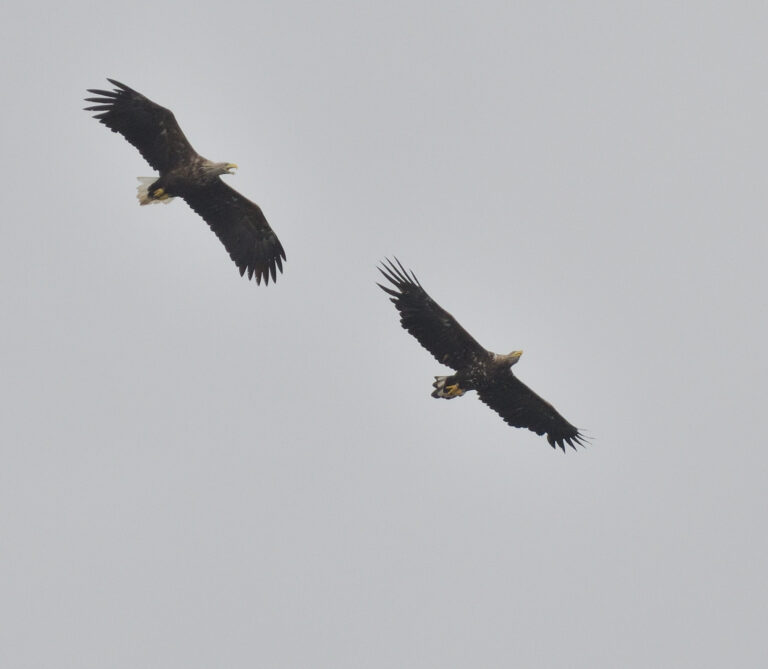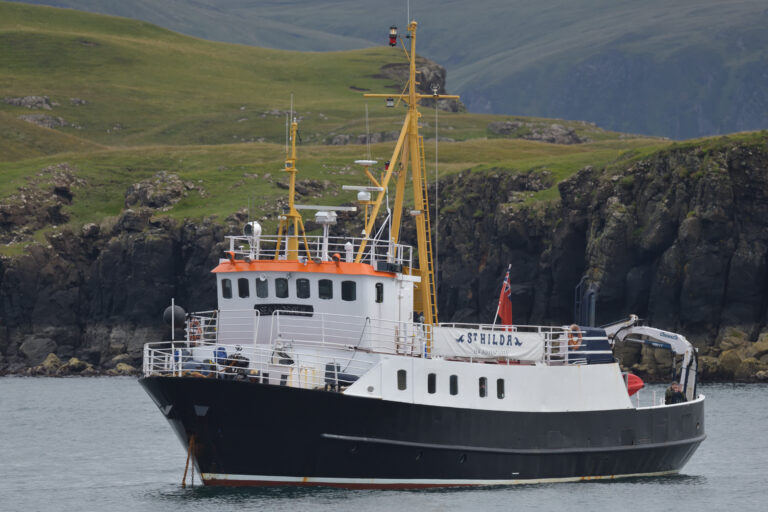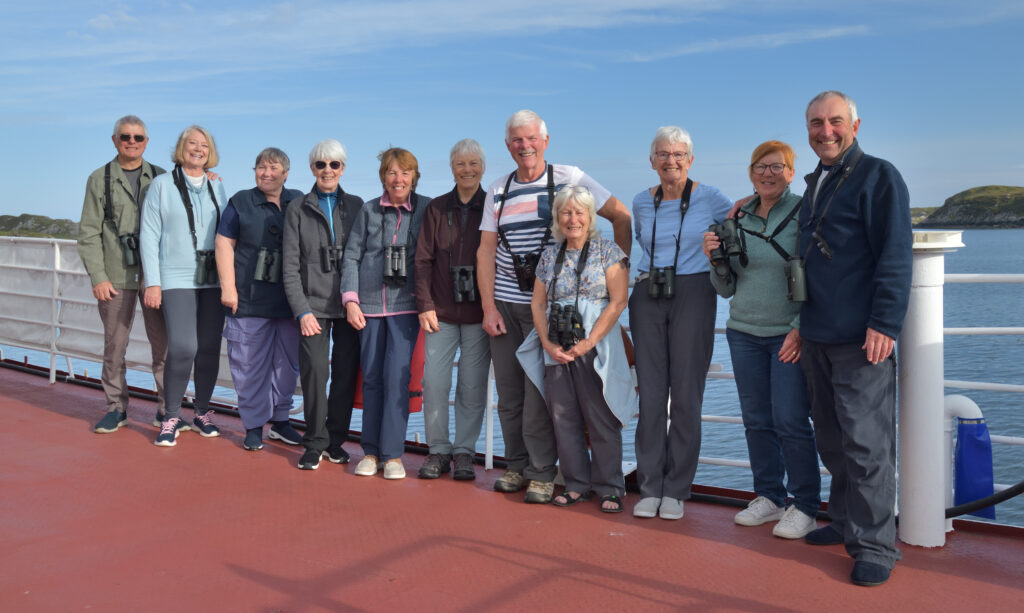
9th July: After a brief talk on safety by Roddy, the Skipper of the Seahorse II, we depart Dunstaffnage Marina at 3.20pm and head southwest along the Firth of Lorn toward the Isle of Mull, spotting Guillemot and Kittiwake along the way. Following afternoon tea at 4pm, we spot two White-tailed Eagles at 5.10pm, hanging on the breeze above the low cliffs of Mull’s east coast, where we enter the narrow entrance to Loch Spelve. Once inside the loch at 5.30pm, the boat makes a close approach to another pair of White-tailed Eagles perched in a tree beside their recently fledged ‘chick’, making five of these eagles within two and a half hours of setting sail! Around 5.50pm, we drop anchor in this very sheltered sea loch, not far from the shore, and by 6.45pm we are enjoying aperitifs and pre-dinner nibbles, followed by a lovely roast beef dinner at 7.15pm, more drinks and a calm night’s sleep, after a magical sunset and an amazing full pink rainbow at around 10.15pm! We are soon into the rhythm of this exciting Hebridean adventure.
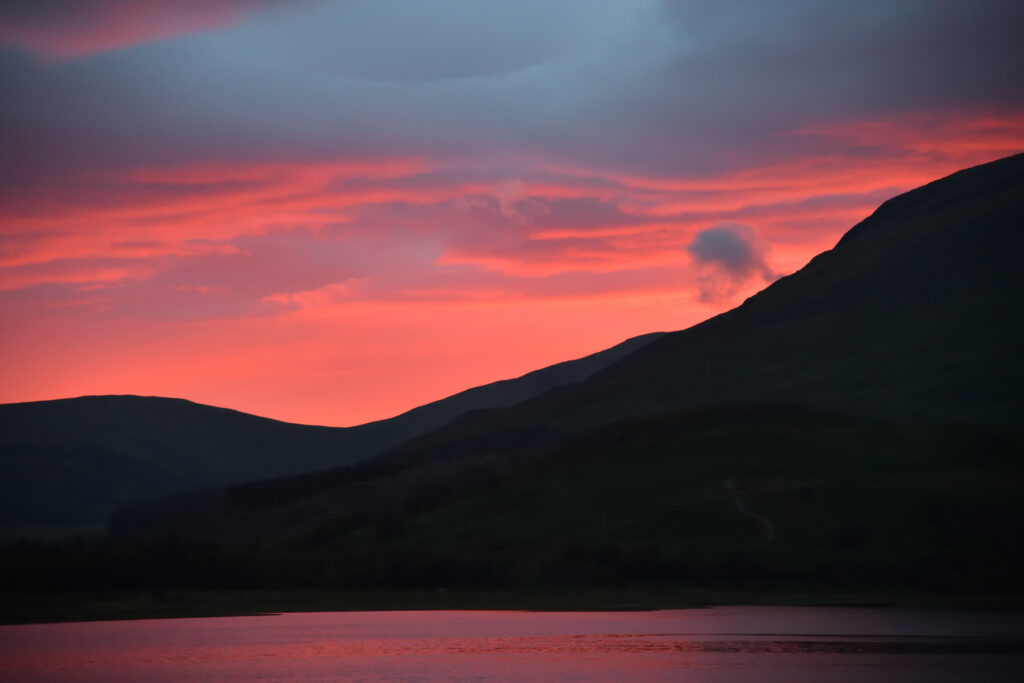
10th July: It’s cool, calm and overcast but dry this morning, where a scan of the seaweed-covered rocky shore produces Oystercatcher, Curlew, Little Grebe, Common Seals and a Brown Hare. After a cooked breakfast at 8am, the crew weighs anchor at 9.15am and we slowly move on, spotting several Red Deer and a White-tailed Eagle perched in a tree on one side of the loch, with another one hanging above a ridge on the other side. At 9.55am, we leave the shelter of Loch Spelve and head north along the Firth of Lorn into a stiff northerly breeze, with another White-tail perched in a tree along the shore, numerous Kittiwakes and Arctic Terns battling against the wind and several Black Guillemots bobbing on the swell. At 10.50am we spot the small dark dorsal fin of a Harbour Porpoise riding the waves between the boat and the shore, and at 11.15am we see a Kestrel hovering not far from Duart Castle. After a tea break, we enter the shelter of the Sound of Mull where another White-tailed Eagle flies directly over the boat barely fifty feet above us, while mobbed by noisy Arctic Terns. As we track the huge raptor, it lands to join its partner in a tree near Craignure golf course. At 1.30pm, lunch includes Inverlussa mussels, freshly harvested this morning from Loch Spelve. Around 2.30pm, we drop anchor in Tobermory Bay within sight of the colourful waterfront and go ashore in a rubber tender called a Zodiac for a coastal walk through woods with several waterfalls, where we find new birds like Buzzard, Goldcrest, a pair of Grey Wagtails and a family of Spotted Flycatchers.
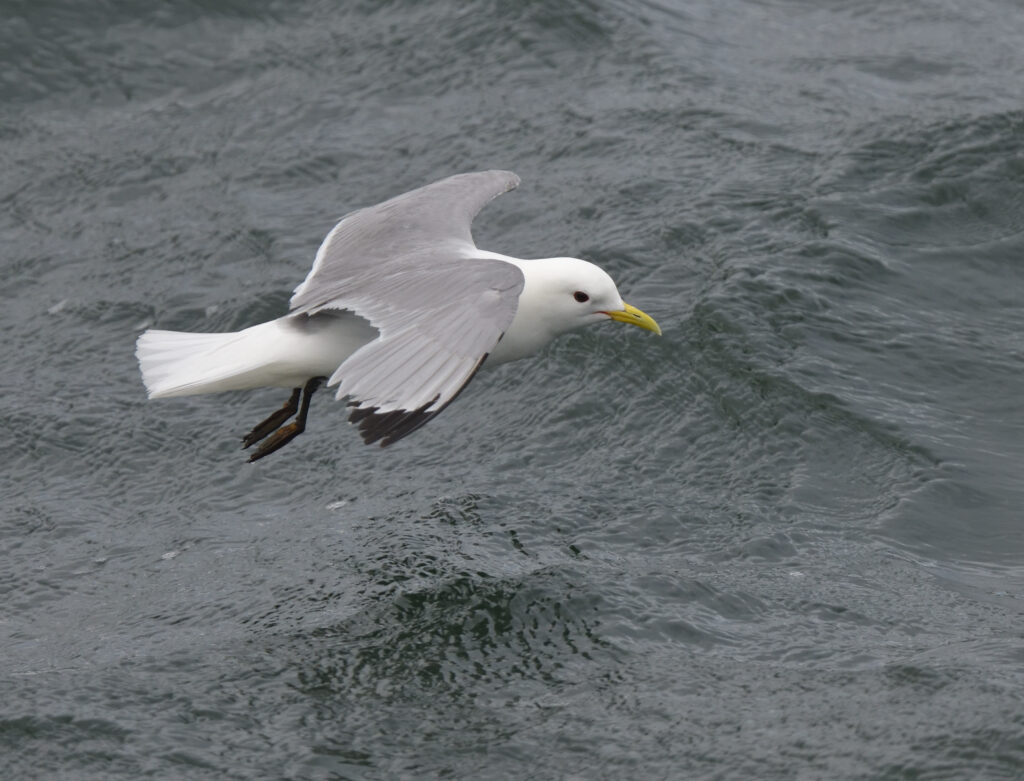
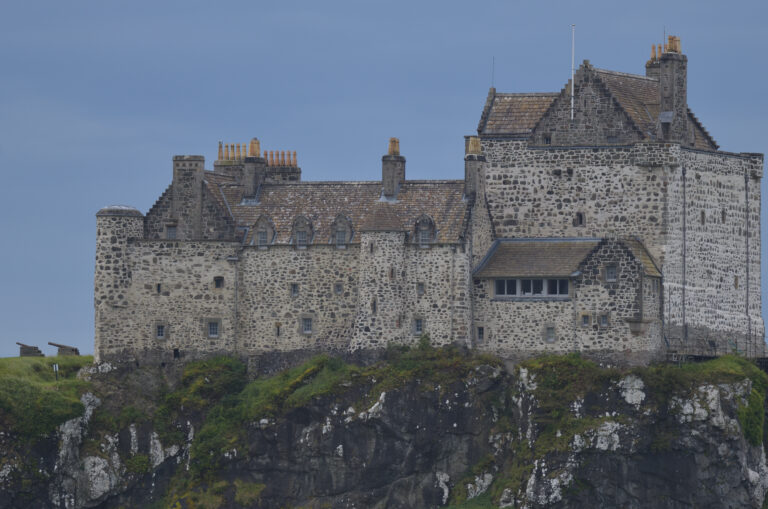
11th July: The crew weighs anchor at 9.25am and we sail north from Tobermory past the Rubha nan Gall lighthouse where we spot a family of Ravens gliding along the clifftops at 9.45am. A little further along the north coast of Mull at 10am, we pass a blonde-headed adult White-tailed Eagle sitting on a grassy slope and then say farewell to Mull as we cross the Sound of Mull to follow the Ardnamurchan shore, where we see the first of many Manx Shearwaters at 10.23am, with loads more following us north as we pass The Point of Ardnamurchan at 10.55am, mainland Britain’s most westerly point. Beyond Ardnamurchan, we see plenty more ‘Manxies’ on the crossing to the Isle of Muck, where we spot our first Puffins at 11.30am and Razorbills at 11.50am. At noon, we drop anchor in the lovely sheltered bay of Camas Mòr on the south shore of Muck, an ideal spot for lunch in the lee of the north wind. At 1.20pm, the crew weighs anchor and we continue north across the Sound of Rùm, with a 200° unbroken panorama of islands from Skye in the north to Tiree in the south, and a dark phase Arctic Skua and then a Great Skua along the way. Following the wild west coast of Rùm, with waterfalls, caves and a rock arch, we spot wild ‘Armada’ goats at 3pm, grazing high up on a steep grassy slope. Crossing the Sound of Canna, we find a Harbour Porpoise among rafts of Puffins off the south coast of Sanday, and then drop anchor at 3.52pm in Canna Harbour, with time ashore on tranquil Canna, where the local birdlife includes plenty of Eiders, Black Guillemots, Curlews, Rock Pipits, Hooded Crows and juvenile Wheatears as well as Ringed Plover, Bar-tailed Godwit, Rock Dove and Linnet.
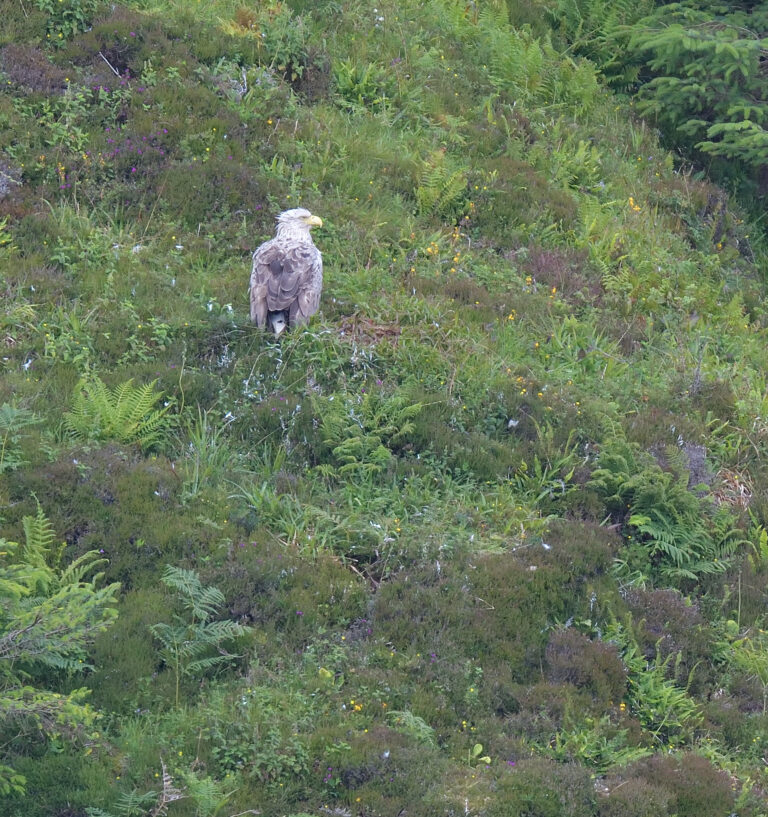
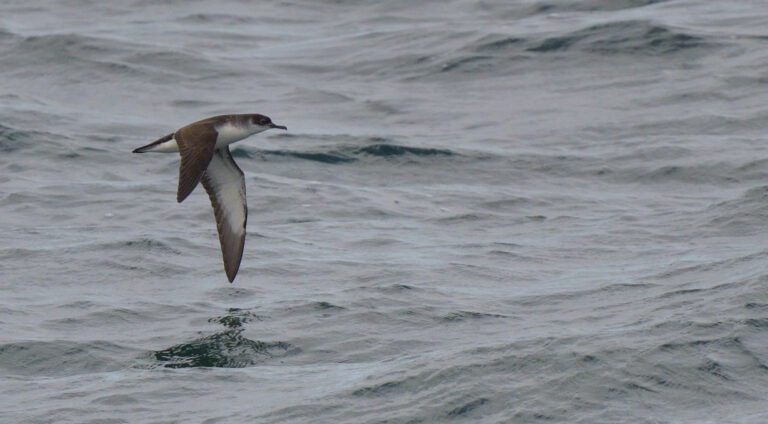
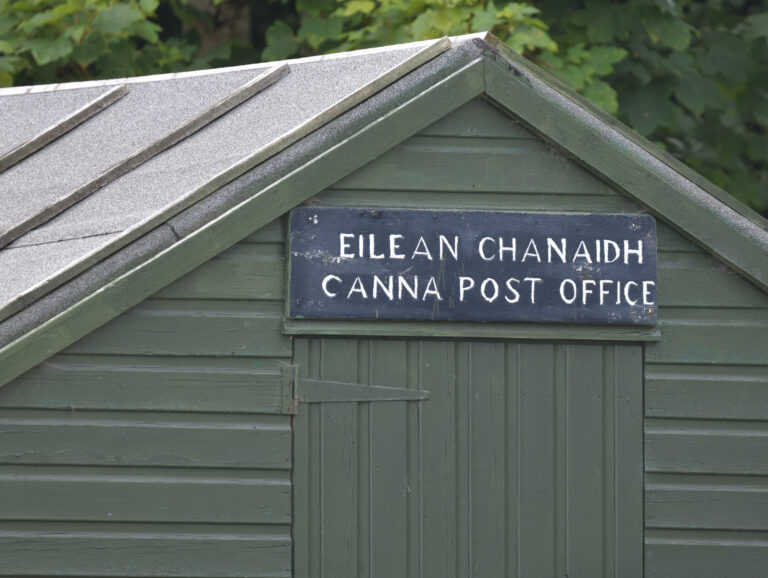
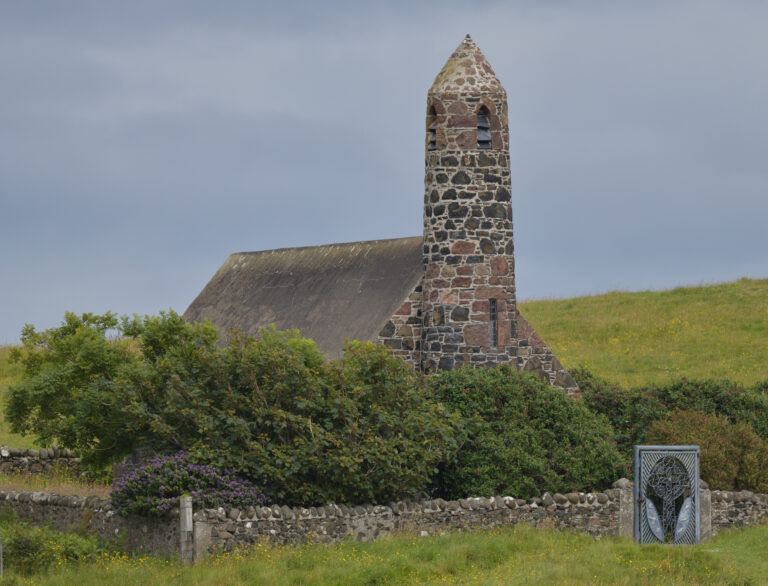
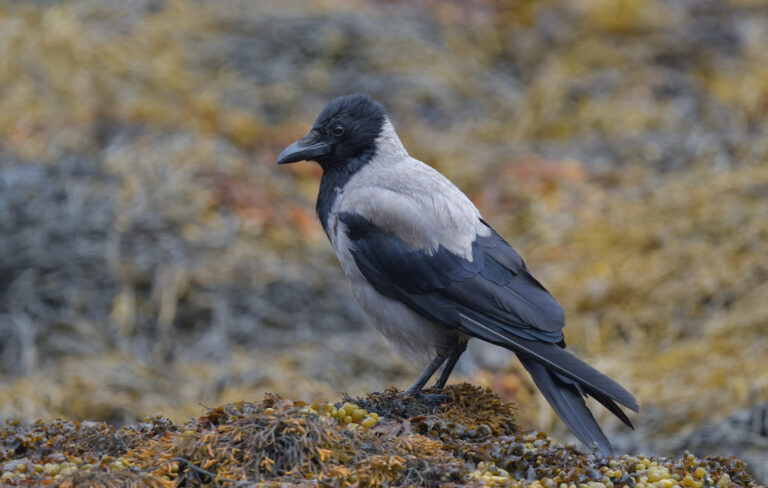
12th July: It’s very calm this morning as the crew weighs anchor at 8.05am and we head north, across the Little Minch, towards the west coast of Skye, spotting our first Grey Seal, twenty minutes out. Further on, we pass raft after raft of Puffins and Guillemots, as well as single parent Razorbills, each accompanied by a half-sized chick. We also see a variety of plentiful jellyfish and more groups of Manx Shearwaters, while a Great Skua cruises past at close range. It’s so calm that a group of four Herring gulls actually land on the aft deck hoist, as if waiting for snacks! After our own mid-morning tea break, it begins to rain and most of the group retire to the lounge which becomes a reading room, while the remaining stalwarts out on deck watch two light phase Arctic Skuas harry a Kittiwake.
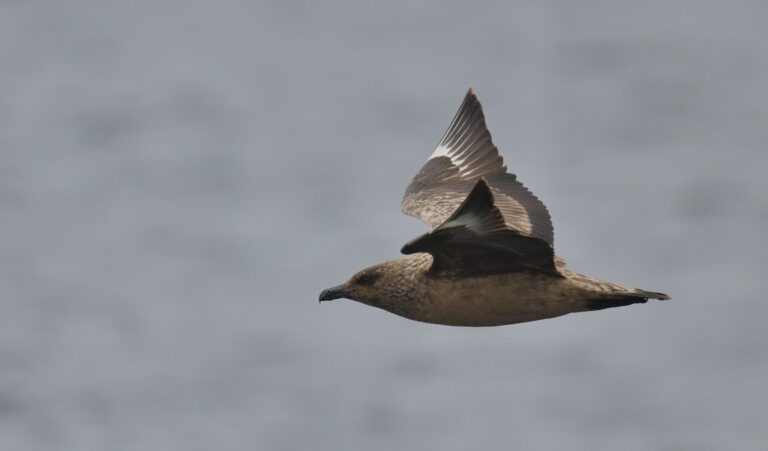
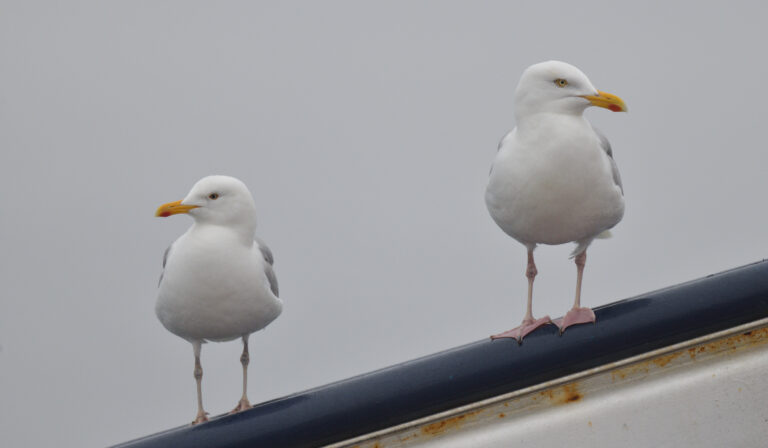
After lunch, we approach the Sound of Harris and spot another White-tailed Eagle, this time sitting on the top of a small grass-topped islet in the sound. At 2.20pm, we arrive at the jetty in Leverburgh on Harris, where we await delivery of a replacement outboard motor while taking on over three tons of water! While water also falls from the sky, some of the group go ashore in search of a café, where they are served coffee delivered from Columbia just yesterday, after a six month journey by sailing ship! Of course, by the time the group returns to the boat, the tide has fallen by several feet and so they access the deck using an improvised platform of stacked fish boxes from the harbour wall. Five hours after mooring, the outboard finally arrives and we move a short way further north along the sound to anchor and enjoy a tasty chilli, followed by a lovely cheese board.
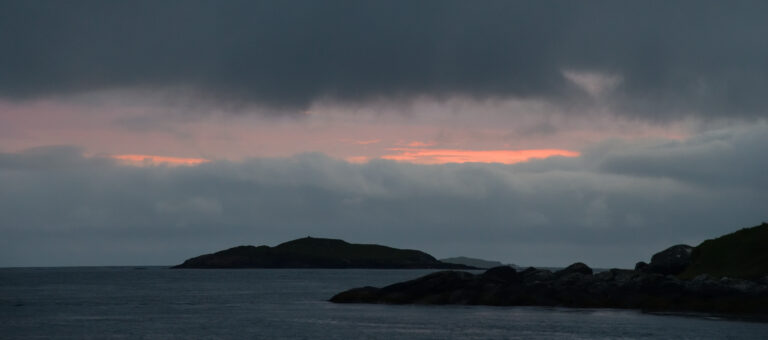
13th July: It’s calm and sunny first thing, where another White-tailed Eagle sighting before breakfast, means that we have seen this magnificent species daily for the last five days! Skipper Roddy decides that today’s the day for heading to Saint Kilda, so he starts the engine at 8.55am and sets a course west from the Sound of Harris. Sailing between Pabbay to the south and Shillay to the north at 10.10am, past a flurry of Arctic Terns, these are the last islands until Saint Kilda, around 50 miles further west! Soon after leaving the sound, the swell rises to between six and nine feet, whipped up by the force 4 wind, creating an exciting white-knuckle ride as the boat rolls through some 40° from one side to the other, with the regularity of a metronome. During the crossing, we see plenty of the usual suspects such as Fulmars, Manx Shearwaters, Gannets, Puffins, Razorbills and Guillemots, plus a handful of tiny Storm Petrels, pattering across the surface, and several cavorting Bottlenose Dolphins, which are both new for the trip. After about four hours, the rugged outline of the Saint Kilda archipelago appears on the horizon, cloaked in low cloud, and as we get closer the white colony of Gannets on Stac Lee is clearly discernible. On the approach to Village Bay on the main island of Hirta at 3.40pm, we see a couple of Great Skuas attracted by more Puffins than I ever remember seeing anywhere else, while a Red-throated Diver flies out to sea in the opposite direction to our course, where we drop anchor in the bay at 4.07pm, after an epic seven hour sailing. This is the first arrival at Saint Kilda this year for the Seahorse!

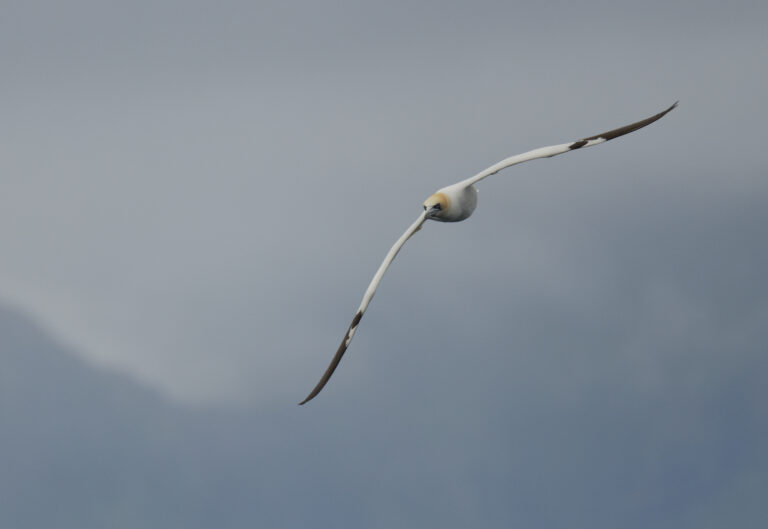
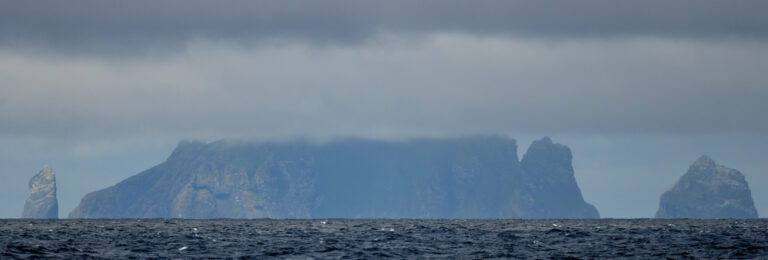
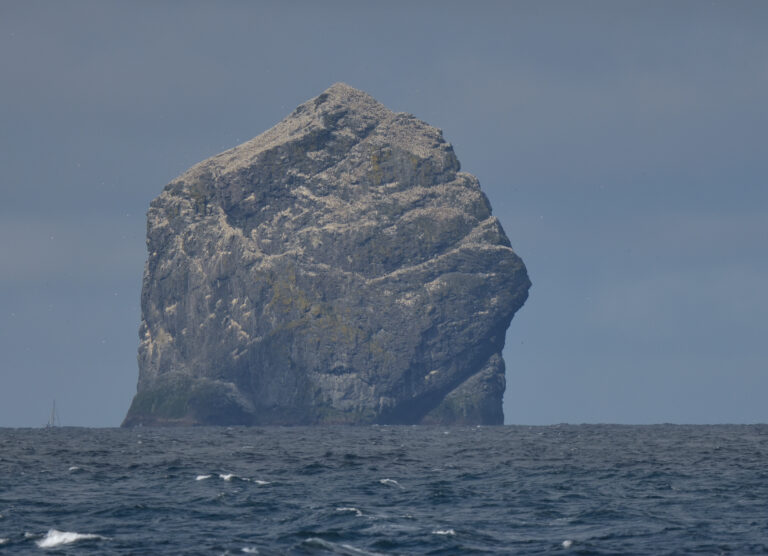
14th July: Low cloud still shrouds the land above the abandoned village this morning, but undaunted, we go ashore after breakfast, with packed lunches, to explore this UNESCO World Heritage Site. Once ashore, we meet the local wild Soay Sheep and soon hear calling Snipe and the first of several Saint Kilda Wrens, singing from the top of an old stone wall, of which there are many, while Great and Arctic Skuas circle the area and juvenile Wheatears perch on the walls. Walking along the main street, we pass over a dozen single storey stone houses, each with two windows and a chimney at each end, and now largely in ruins. As well as families of Wheatears and Wrens, there is even a family of Fulmars nesting in one of the back gardens!
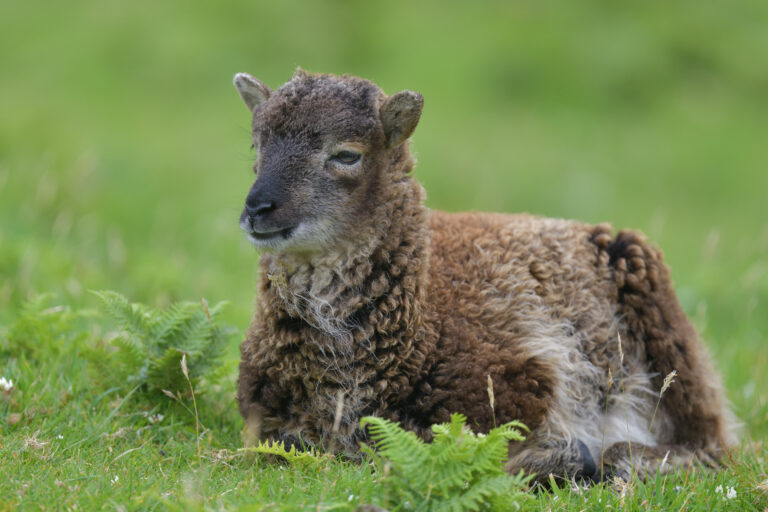
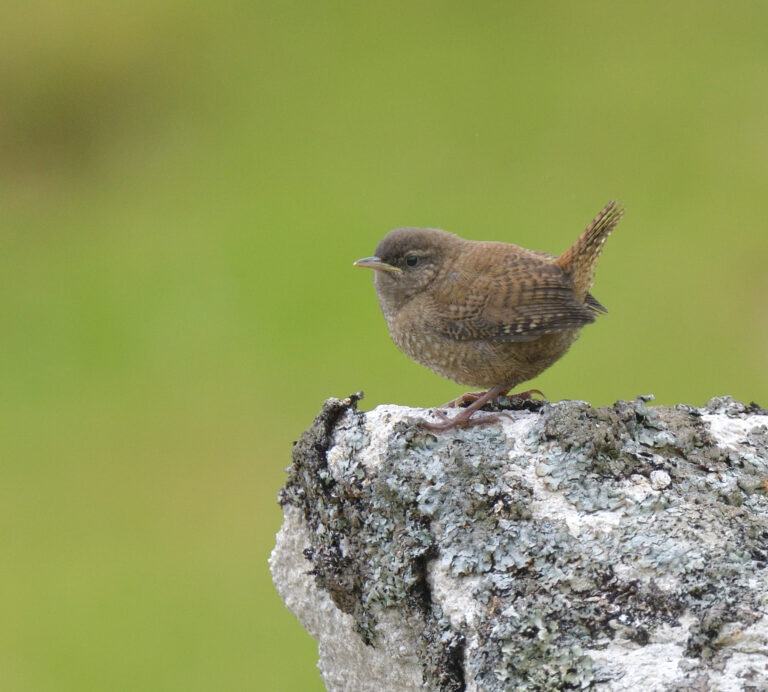
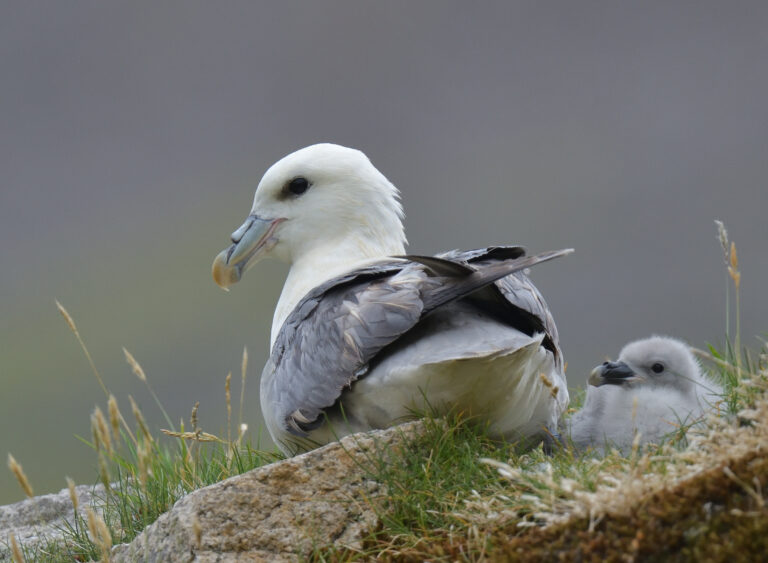
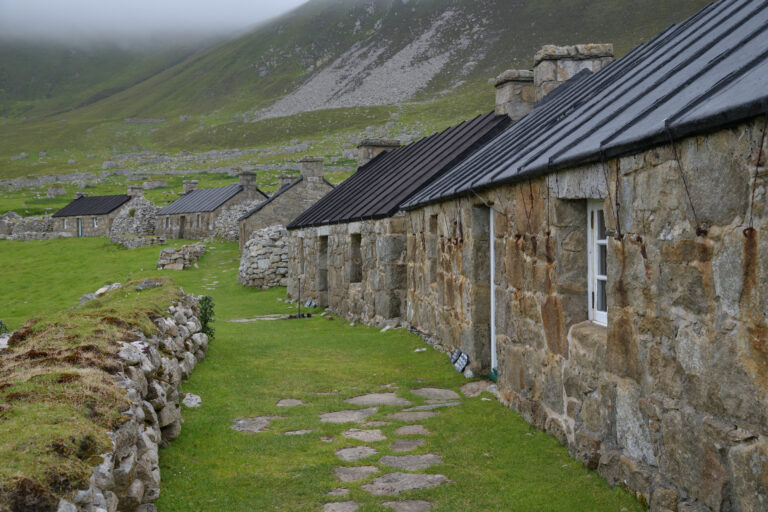
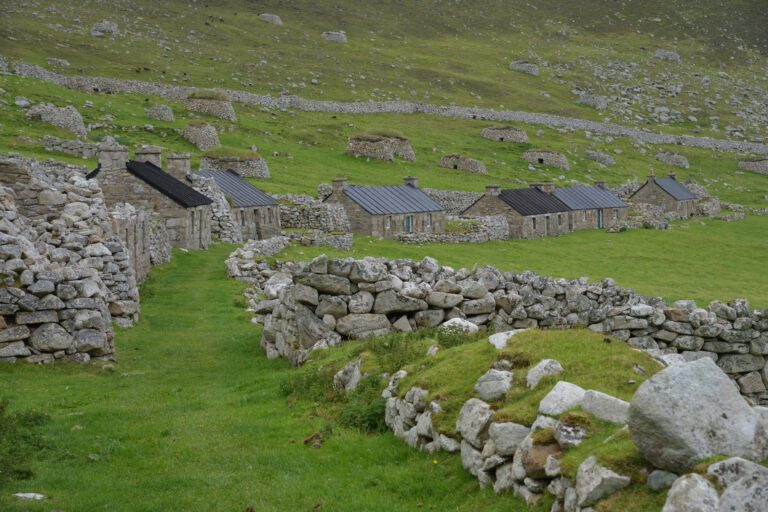
From the main street, we head up a slope dotted with dozens and dozens of oval turf-topped stone structures called Cleits, used as larders for harvested seabirds, eggs and other commodities. An enormous amount of work must have gone into building the layout of this remarkable settlement. Given the remoteness of this harsh but evocative setting, it’s hard to imagine how people could have existed here for some two thousand years, until the last inhabitants abandoned the village in 1930. The fact that tiny Wrens got here across a 40 mile stretch of turbulent sea is equally hard to contemplate. At the top of the slope, we reach an impressive view of the highest sea cliff in the British Isles, towering 1233 feet above sea level, with Boreray and Stac Lee four miles away to the northeast. Fulmars hanging on updraughts along the clifftop here seem to be there just for the sheer fun of it. What a great place for a picnic lunch.
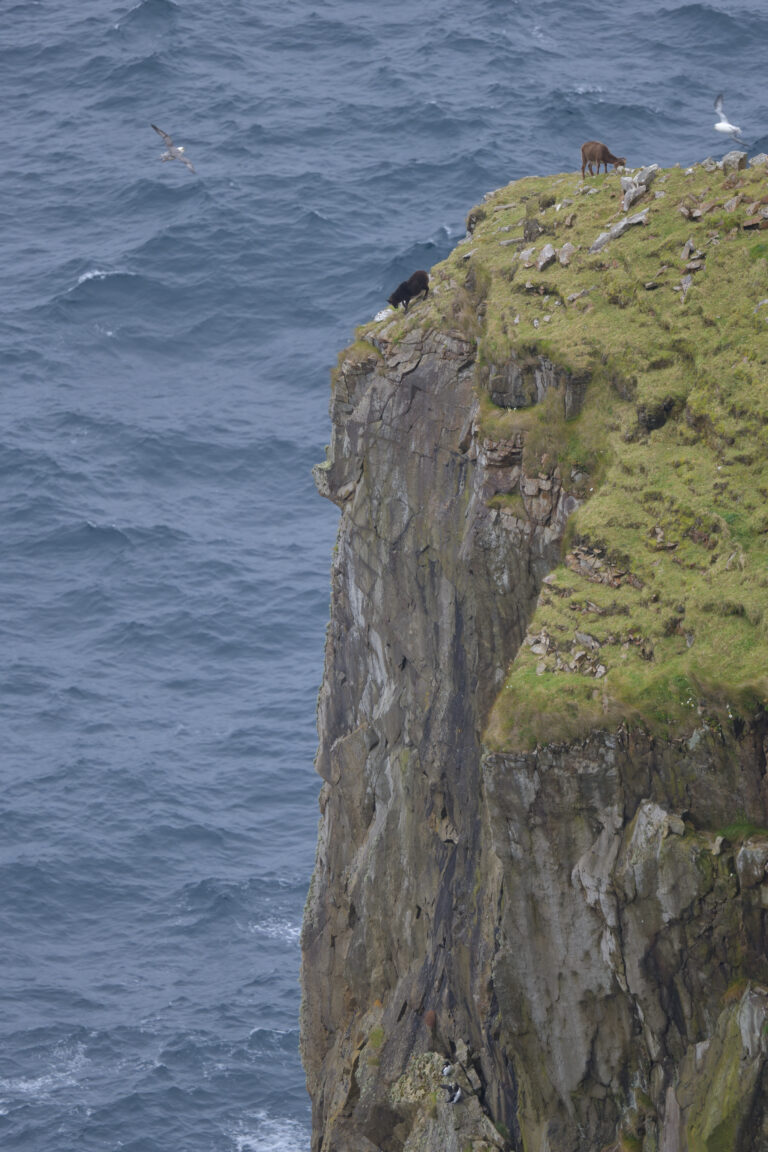
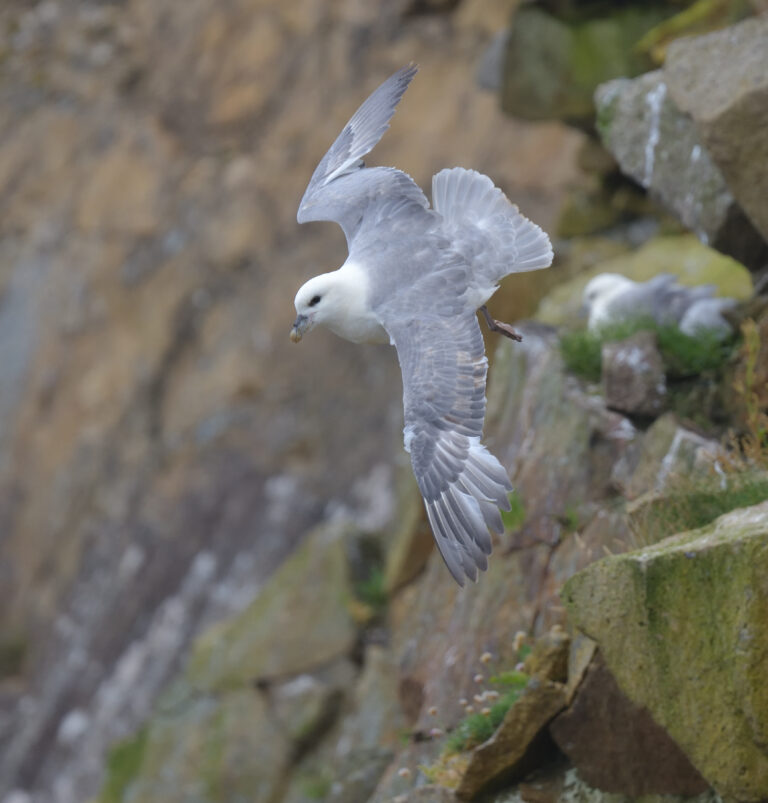
By mid afternoon, we are back on the Seahorse and weigh anchor at 3.35pm to circumnavigate Dun, a small but spectacularly rugged island, penetrated by the pounding sea to form arches in the rock, and home to thousands of Puffins, Fulmars and other seabirds, swirling in the air all around us. At 4.24pm, Roddy drops the anchor to a depth of 19 fathoms in another spectacular setting on the southwest side of Hirta, which he describes as “a once in a lifetime anchorage” as this coast is normally battered by the prevailing westerlies, whereas today it offers shelter from the ongoing wind from the north. With high, near vertical grassy slopes grazed by dozens of Soay Sheep dropping into deep black water, where we spot three large Grey Seals, the setting is so special that even the three man crew take photos!
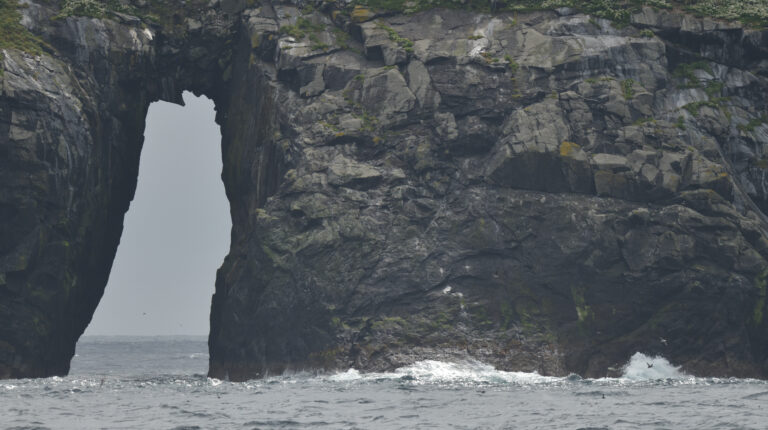
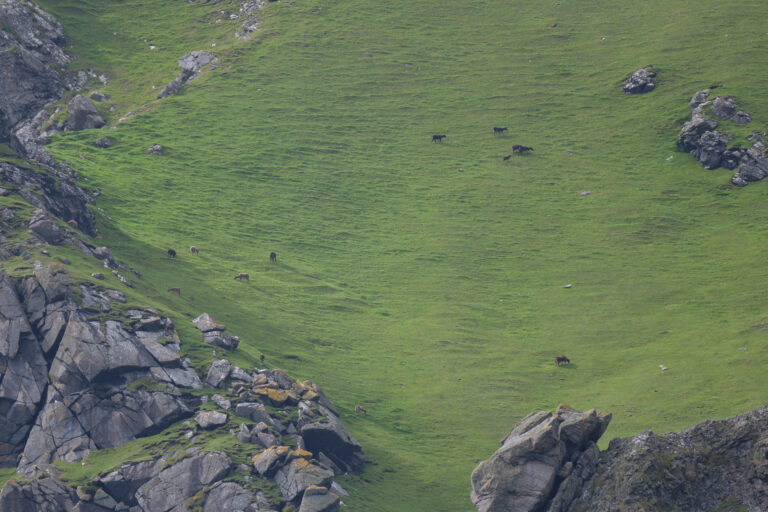
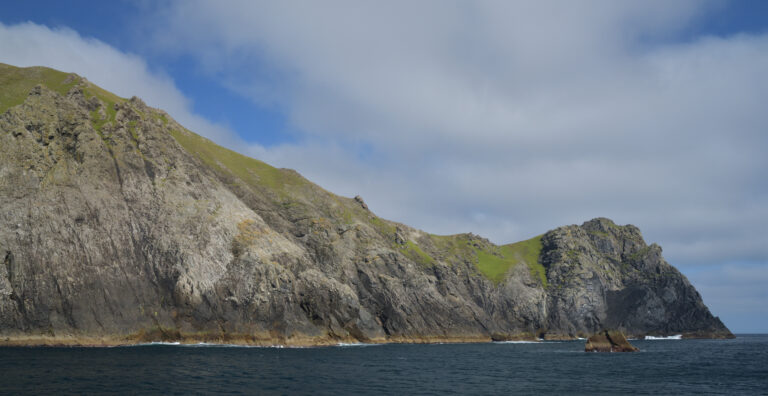
15th July: The cliffs are so high here that they are cloaked in mist this morning as we weigh anchor at 7.30am and head west, past the vertiginous slopes of first Hirta, and then Soay, en route to even wilder Boreray, where we sail between its high cliffs and the adjacent Stac Lee, and all plastered in some 60000 pairs of Gannets, which is one of the largest colonies in the world! The sights and sounds of so many Gannets all over the cliffs and in the air is incredible, simply stunning, and probably the biggest highlight of the trip. Sailing on past Stac an Armin, Britain’s tallest sea stack towering 626 feet above sea level, dozens of Gannets follow the boat at stupendously close range and occasionally plunge dive head first, with wings folded back, which is utterly breathtaking.
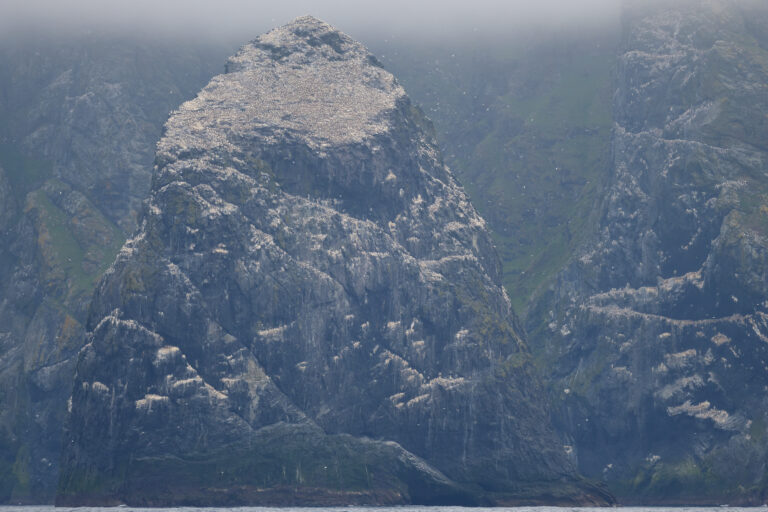
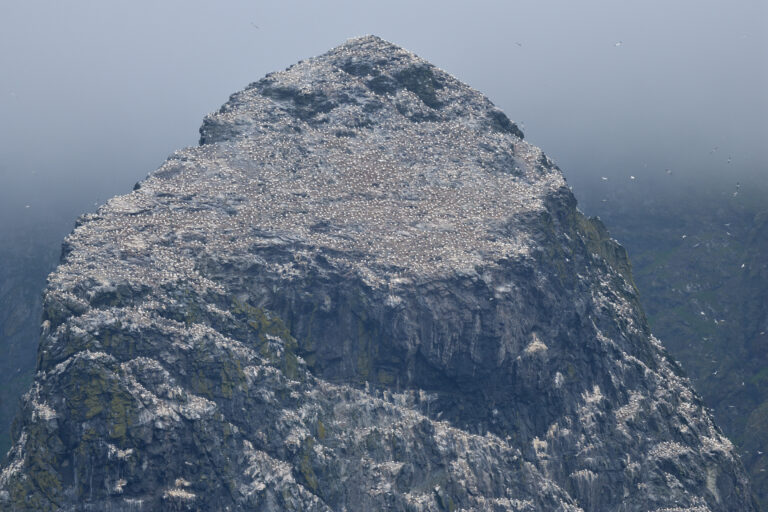
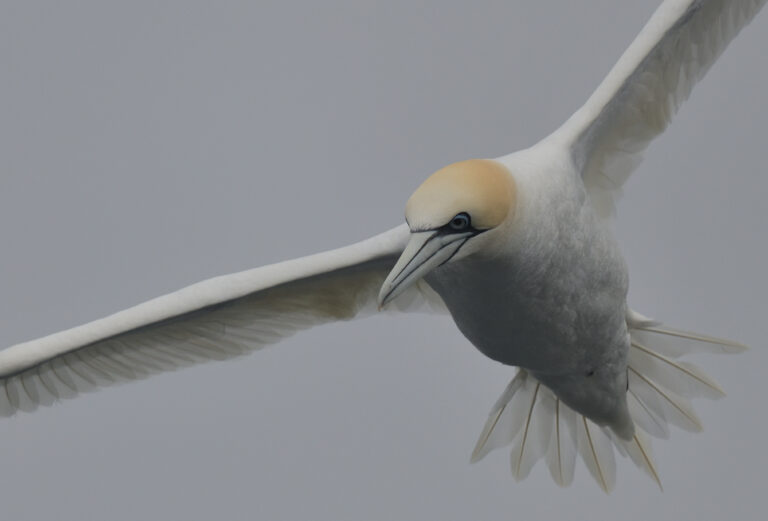
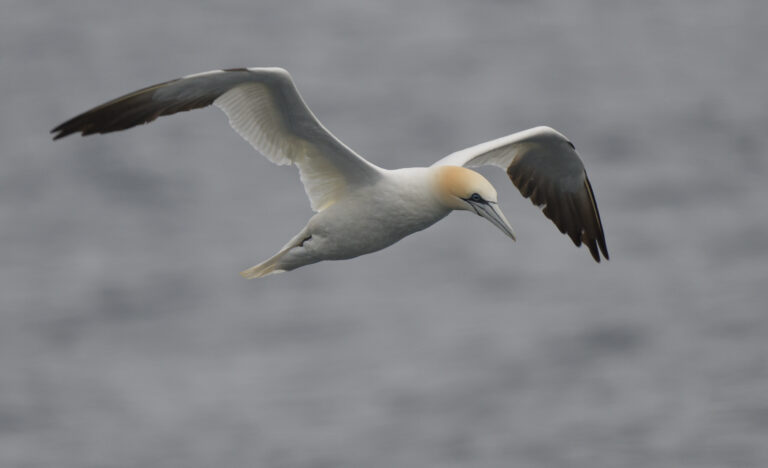
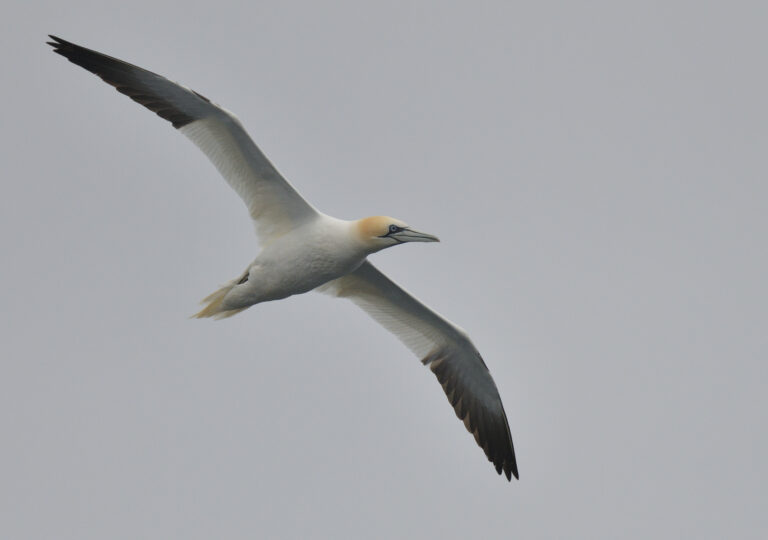
Around 9.30am, Boreray recedes in stature as we begin the long crossing back towards the Outer Hebrides chain of islands, which come into view on the distant horizon at around 10.50am. The return crossing is thankfully far smoother than on the way out, and along the way we spot a pod of Common Dolphins breaching clear of the water at 10.15am, the first of several Storm Petrels at around 11.45am, and at 12.05pm, we spot a dorsal fin. Thinking it might be a Basking Shark, the boat makes a U turn and as we home in and circle the fin, we realise it actually belongs to a Sunfish! This strange spherical fish which swims on its side, with a dorsal fin flapping in the breeze, can grow to enormous dimensions, but this individual is a mere tiddler at about four to five feet long! Further east, we see Manx Shearwaters and more Storm Petrels at 12.55pm and a Harbour Porpoise just after 1pm, by which time the Saint Kilda islands (Hirta, Soay, Boreray, Dun, Stac an Armin, Stac Lee and Levenish, in order of diminishing size) have vanished beyond the misty horizon.
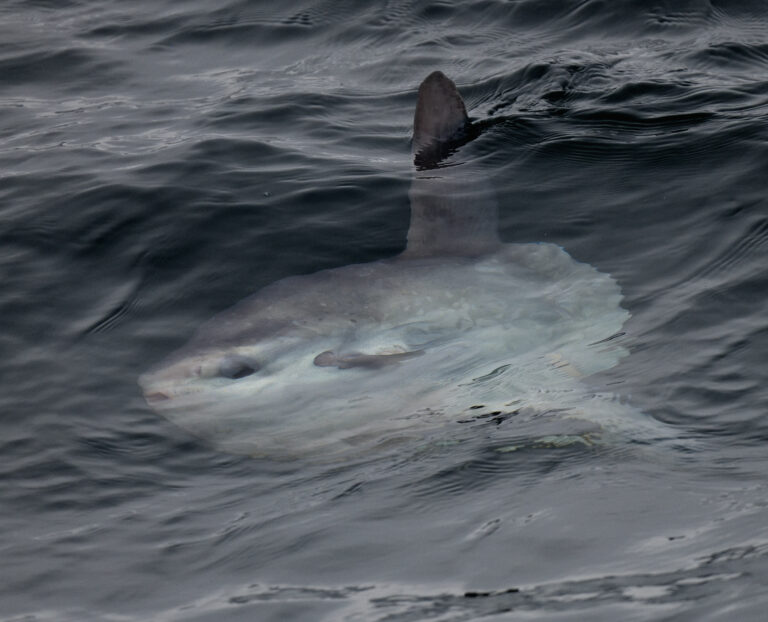
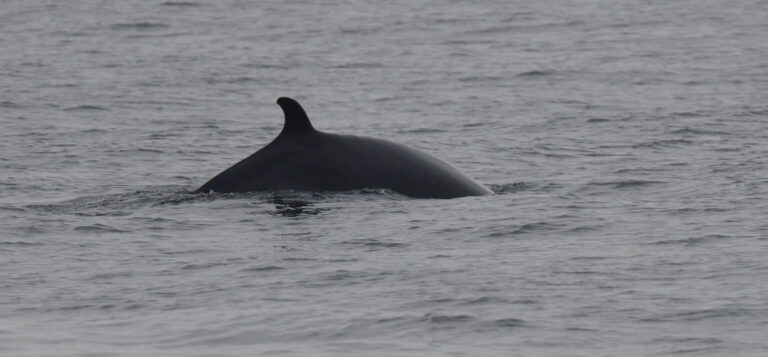
At 2.20pm, we return to the top deck straight after lunch, just in time to see the arching back of a Minke Whale with a high curving dorsal fin surface three times. More Storm Petrels patter by and at 2.23pm the sun appears! By 3pm, we are back in the Sound of Harris, passing several long white sandy beaches on the way to our anchorage for the night in Loch Roghadail, by which time the wind has completely died away. After dropping anchor here at 4.37pm, we go ashore for a lovely walk in the warm sunshine, spotting Common Sandpiper, Raven, Wheatear and noisy Common Terns near the slipway. Moving on, we visit the nearby Saint Clement’s church, built by the MacLeod clan in 1520. What a fabulous day that was.
16th July: It’s still calm but overcast this morning as the crew weighs anchor at 9am and we head north along the coast of Harris and then Lewis towards the Shiant Isles. At 9.15am we spot the first of five Minke Whales seen over the next hour and a quarter, along with Harbour Porpoises at 10.05 and at 10.51am. At 9.30am we spot a Red-throated Diver in flight, and then a larger flyby Black-throated Diver at 11.10am. A Great Skua cruises by at 10.20am and we spot a couple of Manx Shearwaters at 10.47am along with Storm Petrels at 10.50 and again at 11.05am.
We arrive off the Shiants at noon and drop anchor off the west coast of the main island, with tens of thousands of mainly Puffins, but also Guillemots, Razorbills and Shags on the water, along the boulder-strewn slopes and in the air, especially when a pair of marauding Ravens appear and add further excitement to all the mayhem. A Zodiac ride along the rocky shore here allows eye level views of the birds on the water and adjacent rocks, while plenty more constantly pass overhead, pooping as they go! Amongst the throng on the water are several Razorbills accompanied by flightless chicks less than half the size of their parents. The sights and sounds of all this activity are overwhelming and almost as spectacular as yesterday’s Gannet colony.
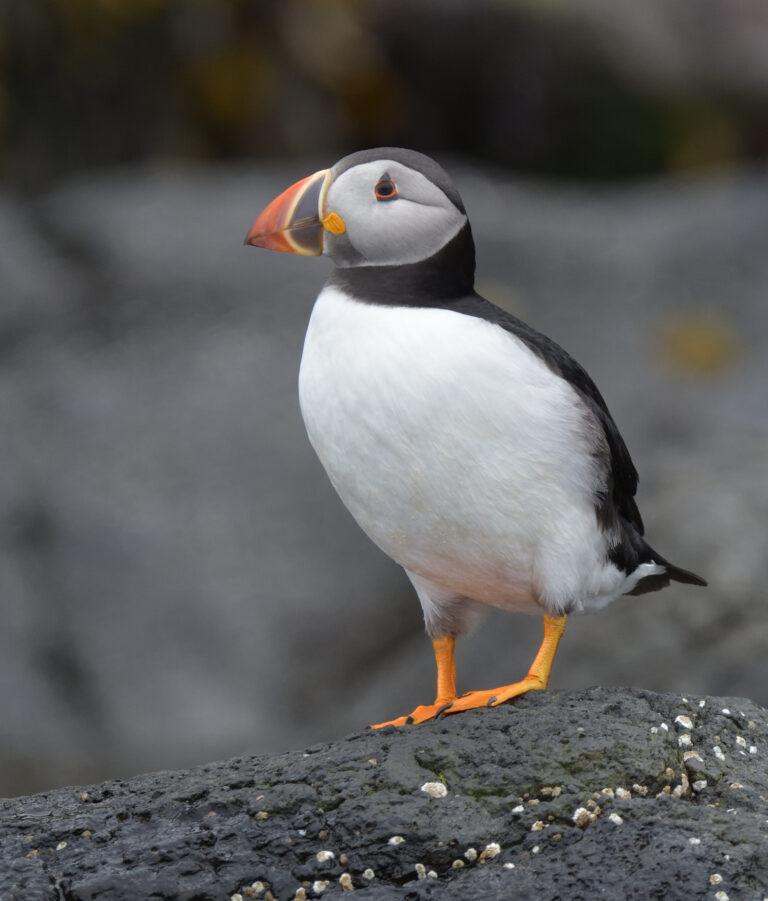
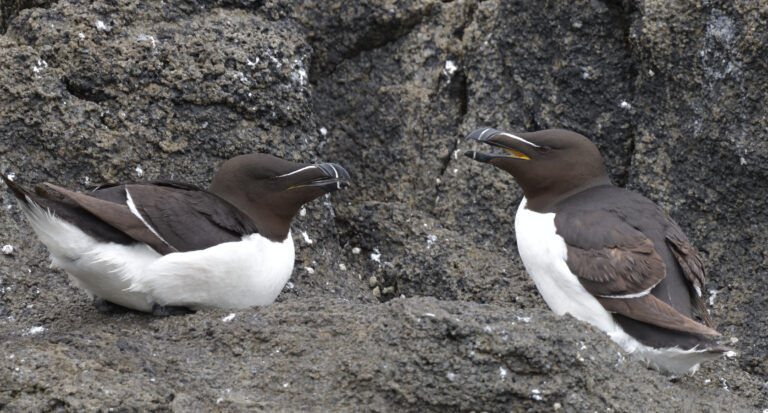
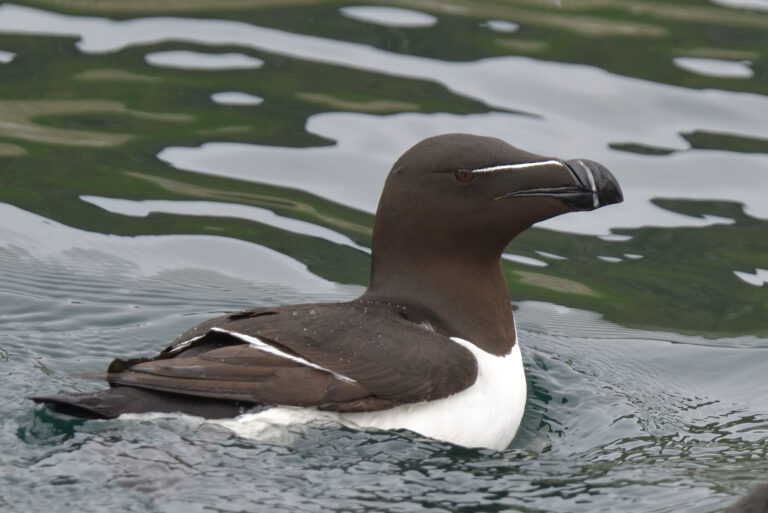
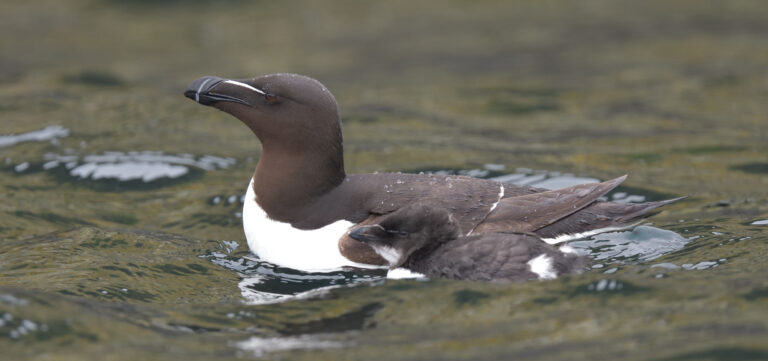
After lunch back on board, the crew weighs anchor at 1.45pm and we head south across The Minch toward the rugged skyline of the Isle of Skye, where we draw level with the north coast at around 3.20pm. Continuing south, we cross the Sound of Raasay, spotting two or three Harbour Porpoises in our wake, and then a White-tailed Eagle above rocky Rona on the port side, before passing through a narrow channel with numerous Black Guillemots, between the islands of Rona and Raasay at 5.15pm. Next, we pass Applecross on the mainland to the east, with a Vanguard class submarine on the starboard side! We pass through the Kyle Akin, a narrow strait separating the Isle of Skye from the mainland at 7.34pm, where the unusual sight of a Woodpigeon, which is new for the trip, crosses from the mainland and gets a cheer on the way! At 7.52pm, Roddy drops the anchor in a secluded bay called Loch na Bèiste, making this the longest cruising day so far at around 75 miles in 9 hours and 7 minutes.
July 17th: It’s bright and breezy this morning, with a wind from the south for a change, as we set off at 8am, heading south along the Sound of Sleat, between the mainland to the east and Skye to the west, with lovely wild scenery along the way, although the sun has given up by 9.11am! At 9.45am we watch a Gannet diving off lonely Knoydart and then spot a Red-throated Diver and a couple of Manx Shearwaters, followed by another Minke Whale at 10.40am off the southern end of Skye opposite Mallaig, as well as more Manxies, and Guillemots with fluffy buoyant fledglings.
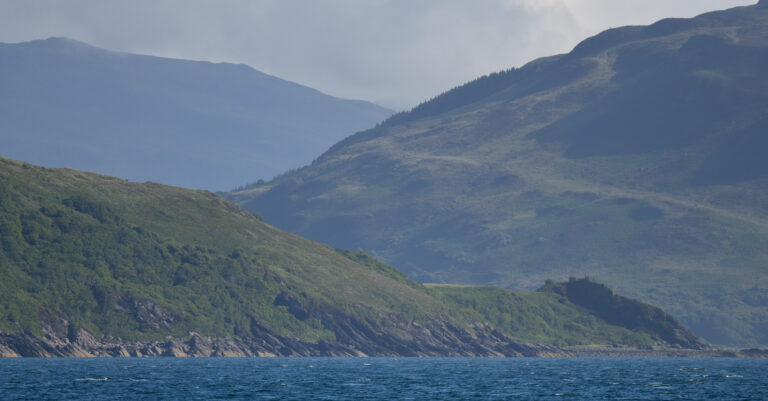
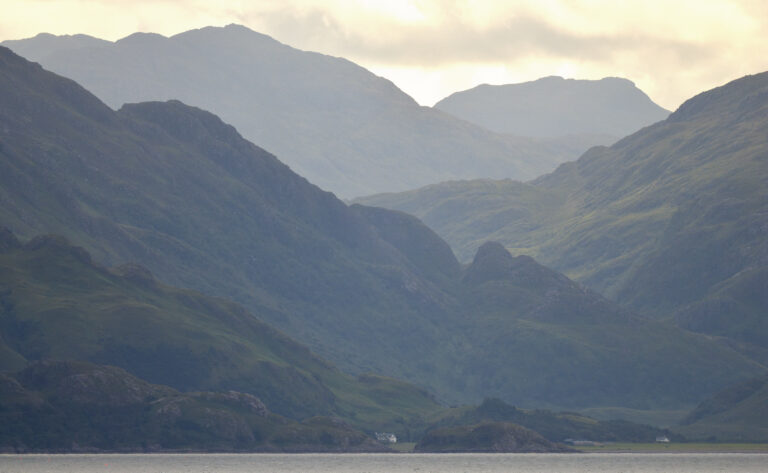
After elevenses in the lounge, we spot a pod of probably Common Dolphins, east of Eigg, along with a large movement of Manx Shearwaters. As we sail away from Eigg, past a raft of Manx Shearwaters, a Great Skua passes by, heading in the opposite direction. By 12.50pm, we are passing Muck and spot a nearby Harbour Porpoise, shortly followed by more Manx Shearwaters and another pod of dolphins in line with now distant Eigg. At 1.35pm, we pass Ardnamurchan Point again, just in time for ‘two soups’ for lunch.
At 2.49pm, we drop anchor off Mull in the mouth of Loch a’ Chumhainn and go ashore in the Zodiac on a slipway at tiny Croig, where Song Thrush, Stonechat and Dunnock are new for the trip. After a short walk, we come to a lovely secluded sandy beach, where we find two Ringed Plovers, as well as a female Kestrel, a Buzzard, a Swallow, a singing Wren, a family of Linnets, some Meadow Pipits and more Wheatears, plus a Brown Hare and several Red Deer, but still no Otters.
July 18th: It’s calm but overcast and damp this morning as the anchor comes up at 9.08am to sail east along the north coast of Mull and then south along a very damp and murky Sound of Mull. At 12.58pm, we turn the corner at Rubha an Ridire and leave the Sound of Mull, heading north along the steeply wooded uninhabited west shore of Loch Linnhe where the tops are shrouded in mist. We spot an immature White-tailed Eagle less than ten minutes into this new ‘uncharted’ water, and then a pale phase Arctic Skua heads north at 1.38pm along this wide sea loch which forms the southern end of the Great Glen which bisects northwest Scotland. At 1.45pm we spot the immature White-tail, this time flying north along the wooded slopes, followed by an adult. Around 2.10pm we turn left into Loch a Choire, where Roddy drops the anchor in the inland end of the loch at 2.25pm.
While waiting for the weather to improve, we have a guided tour of the warm and cosy engine room with its eighteen batteries and 380 horsepower engine, amongst a lot of other mechanical and electrical paraphernalia. At 5pm, we go ashore in the Zodiac for a very pleasant walk along the wooded shore of this tranquil sea loch, where sightings include Heron, Common Sandpiper, Grey and Pied Wagtails, Meadow Pipit, Spotted Flycatcher, Stonechat and Swallow, plus Siskin, House Martin and Sand Martin which are all new for the trip. As well as several Red Deer stags with impressive antlers, we also bump into a tiny Pygmy Shrew, barely two inches long, busily foraging along a grass verge, and so intent on its search for food that it gradually comes so close that it’s right under our noses while we all stand around looking down on this elusive creature which is one of the world’s smallest mammals!
After dinner, we enjoy the calmest of evenings yet, on a flat calm sea loch with a Song Thrush singing until after 10pm, while it’s still light!
July 19th: The early risers out on deck are rewarded with Otter sightings before breakfast this morning! At last, Otter is on the trip list, making a total of 13 different mammals seen, ranging from a whale to a shrew! At 8.20am the crew weighs anchor for the last time and we set off back to Dunstaffnage marina. At the meeting point of Loch a Choire and Loch Linnhe at 8.35am, we spot a Red-breasted Merganser which is new for the trip, making a total of 66 different birds seen. After crossing the wide expanse of Loch Linnhe, towards the 14th century Castle Stalker, we pass two adult White-tailed Eagles in an aerial tussle over territory above Lismore Island at 9.25am, and so we saw these magnificent eagles almost every day of the trip! Once back at the marina at 10.30am, after a round trip of some 455 miles, it’s time for handshakes and hugs with the crew, after sharing such a memorable and spectacular adventure.
